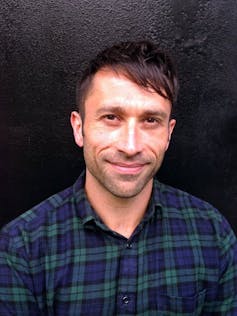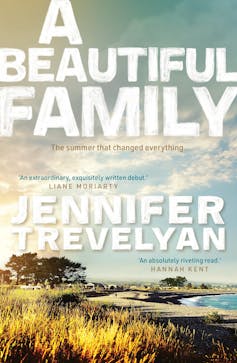
A young man is released from prison and finds work in a cemetery. A family embarks on a beach holiday in New Zealand. In each scenario, there’s not a detective in sight, amateur or professional – although there are a few bodies to contend with.
Just in case you hadn’t noticed, crime fiction today is a capacious genre, unconstrained by the conventional genre tropes, and all the more enthralling for that.
This is despite the fact that there have long been those determined to police the perimeters. In 1928, American author S.S. Van Dine ruled that there should be “no long descriptive passages” and definitely “no subtly worked out character analyses” or even the delightfully vague “atmospheric preoccupations”. More recently P.D. James declared that what the reader expects is a central mysterious crime, usually murder, “and a detective, either amateur or professional, who comes in like an avenging deity to solve it”.
Review: Eden – Mark Brandi (Hachette); A Beautiful Family – Jennifer Trevelyan (Allen & Unwin)
Knowledge can be dangerous
Mark Brandi broke many of the rules with Wimmera, his first book, my copy of which is blurbed “literary crime fiction at its best”.
“Literary”, or perhaps just genre-bending, Wimmera went on to win a swag of crime fiction awards, including the coveted British Crime Writers Association Debut Dagger in 2016 as well as the Ned Kelly Award for Best First Crime.
Having just re-read Wimmera, I think Eden, Brandi’s fifth book, is even better. While Wimmera told a grim story of innocence lost from two different perspectives in two different time frames with a conclusion involving a brutal court judgement, Eden for the most part maintains a single focus. Until the end, that is, when two newspaper articles tell us what we need to know.

The novel is essentially Tom’s story, told from his point of view as he navigates an unheimlich city (an inhospitable Melbourne). He has just been released from jail after serving a nine-year sentence for being an accessory to murder, or as he explains to those who ask, “helping out a mate”.
There is an innocence about Tom that seems to bedevil many of Brandi’s characters. He’s not a bad person, as is increasingly clear, but he is a victim of circumstance and his own naivety.
Having arrived at a boarding house run by an unsavoury type who maintains order with a length of steel pipe affectionately known as Hector, Tom stashes his wallet under the mattress before joining a fellow lodger for a beer. Unsurprisingly, the wallet is nicked and Tom finds himself heading to the Salvos for a blanket and a night on the streets.
Following the advice of someone who has been along the same downtrodden path, Tom heads to the cemetery, where they lock the gates after dark, ensuring a safer place to sleep rough. “So, what brought you to this here Eden?” Cyril the gravedigger asks Tom after discovering him on a bench in a rotunda the next morning.
It’s a long story that Tom doesn’t particularly want to tell, but which the reader will gradually piece together from the breadcrumbs Brandi scatters throughout the book. Nor would it be fair to reveal them here, since there is a significant reward for Brandi’s astute readers.

Other rewards include the diverse characters Tom encounters in the cemetery, including the intimidating Krystal whose “Mum was into Dynasty” (hence the moniker and quite possibly the attitude).
It is Cyril, however, who most captures the attention, since he is something of a metaphysical philosopher, even if he tends to get his Sartre and Camus mixed up. He has, on the other hand, read Peter Singer on the ethics of eating animals and, as a result, is an avowed vegetarian. As he tells Tom, “just because I dig graves for a living doesn’t mean I have to be ignorant”.
Inevitably, Cyril is an avid trivia night participant at the local pub; he is also a cunning grave-digging technician keen to impress upon Tom that “there’s a bit of an art to this business”. And indeed there is. We learn just how long, wide and deep to dig a grave, the best type of headstone (Scottish granite or marble from Italy), and how most of the stone now comes from China while local stonemasons are a dying breed.
There is also the theatre of the burials themselves, which is when Tom begins to twig that all is not quite as it seems. Knowledge can be a dangerous thing in Eden. Tom faces a dilemma as he wrestles with the guilt he carries from the past, when he once knew something was wrong and did nothing. There’s a lot at stake. Ultimately, Eden is a crime novel about the possibility, or not, of redemption. It’s also beautifully told with lots of “atmospheric preoccupations”, especially in the descriptions of life in the cemetery, both human and non-human.
A gathering storm

Also nicely put together is A Beautiful Family, Jennifer Trevelyan’s first published book, which apparently sparked something of a bidding war when her agent, Felicity Blunt (sister of the famous Emily), put it out to tender. Not surprisingly, it has already been optioned for a film, although it is hard to imagine how a screenplay could do justice to a story that unfolds through the naive first-person narration of ten-year-old Alix.
On the plus side, a film will make much of the vivid New Zealand setting as the family set off for their holiday house in the North Island, close to an impressive beach where Alix is determined to spend her days pretending to be a dolphin: “Diving under the waves and popping up again […] Dive-pop, dive-pop”.
It is a clever device making Alix the narrator, since she innocently documents all that she sees, leaving the reader to spot the warning signs. For a start, there is the fact that her mother’s choice of holiday venue contradicts every previous decision she has ever made. In the past, their vacations have been spent in remote places with no fences and where “the local fruit shop was an honesty box at the side of the road”. This time, her mother wants “people”, although she refuses to be specific.
Alix doesn’t care, since she is soon made a new friend on the beach, a Māori boy called Tahu, who fills her in on the story of Charlotte, a little girl who is missing, presumed drowned.
With the innocence of a not-quite Enid Blyton holiday adventure, the pair determine to devote their days to searching for Charlotte’s body. Their daily scouring of the beach serves as a backdrop to the gathering storm that eventually overtakes them.
As in the best mysteries, A Beautiful Family begins innocently enough. There’s the neighbour watching the family over the back fence; there’s the mother’s daily walks along the beach, where she disappears from view even though she is supposed to be “chaperoning” Alix. And then there is Alix’s older sister Veronica’s friendship with the precocious Crystal, who is into shoplifting, underage drinking, and a surf lifesaver called Josh.
Alix’s father, meanwhile, is blithely happy on the patio in his tiny shorts and yellow plastic apron, cooking their evening meal of sausages on a three-legged charcoal burner with a cask of wine at the ready. This is the 1980s, after all, as is clearly established in the precise details of music and manners, including a blistering case of sunburn. We know better now.
Tahu remains a constant in Alix’s beach adventures. Her visits to the home of his extended family serves as an effective, though understated, contrast to her insular and more fraught nuclear family life. There is a telling moment when Alix suspects one of Tahu’s cousins of stealing her fire-engine-red Sony Walkman and Split Enz cassette. As a child, Alix is completely unaware of the racism underpinning her accusation; once again the reader is left to join the dots.
A Beautiful Family is a clever and challenging book that manages to encompass a haunting depiction of innocence lost and a powerful family melodrama, while presenting us with a heinous crime and its discovery. The fact that it is a ten-year-old girl who is responsible for bringing the latter to light suggests the narrative possibilities for crime fiction are indeed boundless. Just please don’t call it literary.
Sue Turnbull is Chair of the BAD Sydney Crime Writers Festival
This article was originally published on The Conversation. Read the original article.







